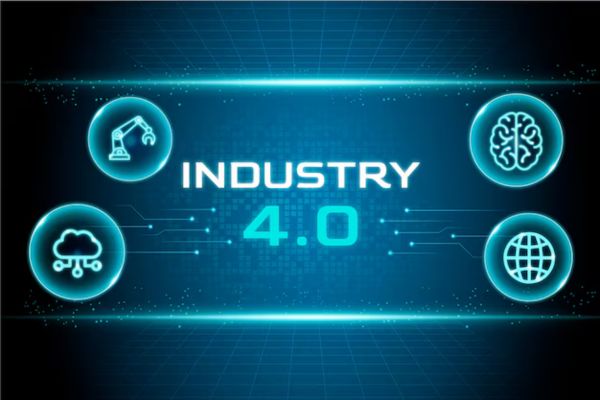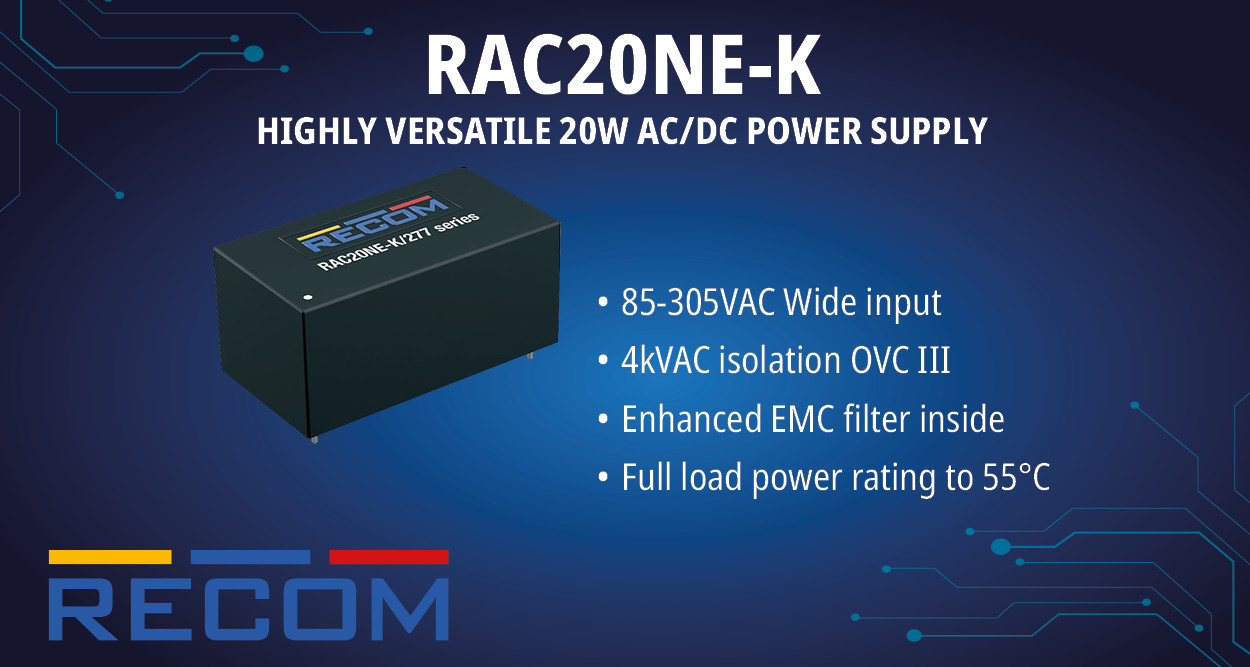According to Precedence Research, the global industry 4.0 market size is expected to be worth USD 884.84 billion by 2034, increasing from USD 190.87 billion in 2025. The market size of industry 4.0 was valued at USD 160.74 billion in 2024 and is poised to grow at double-digit compound annual growth rate (CAGR) of 18.6% from 2025 to 2034.
Market Overview
Industry 4.0 is also called as the Fourth Industrial Revolution, signifies a transformative era in manufacturing and beyond, where Internet of Things (IoT), Artificial Intelligence (AI), robotics, digital twins, and additive manufacturing converge to create smart, connected factories. These technologies enable machines to communicate, adapt in real time, and drive self-optimization with significant gains in productivity, quality, and operational agility.
In a nutshell, Industry 4.0 empowers companies to interpret production data from machine sensors into actionable insights, vastly improving predictive maintenance, supply chain visibility, and customer responsiveness, trends that are driving the ongoing digital transformation
Key Takeaways:
- Market Size 2024: USD 146.43 Billion
- Forecast 2034: USD 627.91 Billion
- CAGR (2025–2034): 15.87%
- Leading Region: North America
- Fastest-Growing Region: Asia-Pacific
- Top Technology Segment: Industrial Internet of Things (IIoT)
How Is Smart Automation Driving the Transformation of the Industry 4.0 Market?
Smart automation, especially through AI, robotics, IoT, and machine learning, is revolutionizing manufacturing and production processes globally. Industry 4.0 is not just a technological upgrade, it represents a paradigm shift in industrial production by enabling intelligent automation, predictive analytics, and real-time monitoring.
Real-World Use Cases
- Siemens: integrates AI and edge computing in its manufacturing units to boost productivity and machine efficiency.
- Bosch: uses machine learning and IoT-enabled sensors for predictive maintenance, minimizing downtime.
- GE Digital: leverages digital twins and cloud-based analytics to optimize industrial assets.
By embedding smart technologies in industrial environments, companies are significantly enhancing operational efficiency, reducing waste, and improving product quality all central to the Industry 4.0 transformation.
Regional Insights
U.S. Industry 4.0 Market Size and Growth (2025–2034)
The United States remains a critical hub for technological innovation in Industry 4.0. With robust investments in smart factories, advanced robotics, and AI-powered platforms, the U.S. market is forecasted to reach USD 190.6 billion by 2034, growing at a CAGR of 14.8% over the forecast period. This growth is supported by aggressive digitalization strategies adopted by leading manufacturers and government initiatives such as Manufacturing USA.
North America: The Dominant Force
North America captured the largest revenue share in 2024 due to early adoption of cutting-edge technologies, high labor costs encouraging automation, and strong government support for smart manufacturing initiatives.
Asia-Pacific: The Fastest-Growing Market
Asia-Pacific is anticipated to witness the highest CAGR during 2025–2034. Countries like China, India, Japan, and South Korea are rapidly scaling their smart manufacturing capabilities through national strategies such as “Made in China 2025” and Japan’s Society 5.0.
Growth Drivers, Restraints, and Opportunities
Drivers:
1. Demand for Operational Efficiency
Companies are under pressure to improve productivity, reduce costs, and eliminate waste. Smart factories, powered by connected devices and data analytics, offer significant efficiency gains.
2. Surge in IIoT Adoption
The Industrial Internet of Things is central to Industry 4.0. Real-time data from sensors and machines enables predictive maintenance, remote diagnostics, and production optimization.
3. Government Support and Initiatives
Government policies and programs such as Germany’s “Industrie 4.0,” the U.S.’s “Advanced Manufacturing Partnership,” and India’s “Digital India” are promoting digital transformation in manufacturing.
Restraints:
1. High Implementation Costs
The initial investment in Industry 4.0 technologies—such as robotics, AI, and cloud platforms—is substantial, creating a barrier for small- and medium-sized enterprises (SMEs).
2. Complexity of Integration
Combining new digital systems with legacy infrastructures poses significant technical and operational challenges.
3. Cybersecurity Risks
With increased connectivity comes higher vulnerability. Cyber threats in industrial environments are becoming more frequent and sophisticated.
Opportunities:
1. Mass Customization and Personalization
Industry 4.0 allows manufacturers to respond to changing consumer demands quickly and cost-effectively through on-demand production.
2. Expansion into Emerging Economies
Developing nations are gradually building infrastructure to support smart manufacturing, offering new growth avenues for vendors.
3. Data Monetization
The vast data generated by connected devices opens up new possibilities for value creation through data-driven insights and service offerings.
Impact of COVID-19 on the Industry 4.0 Market
The COVID-19 pandemic accelerated digital transformation across all sectors. Lockdowns, supply chain disruptions, and workforce limitations emphasized the need for resilient and flexible manufacturing systems. Companies invested heavily in remote monitoring, robotics, and automation to ensure continuity. As a result, Industry 4.0 moved from being an aspirational goal to a business imperative.
Post-pandemic, organizations continue to prioritize investments in digital technologies to mitigate future risks and build long-term operational resilience.
Industry 4.0 Market Segmentation Analysis
By Technology Type Analyis
Dominant Technologies Driving Industry 4.0
In the age of digital transformation, several cutting-edge technologies are at the heart of the Industry 4.0 revolution. These innovations are not merely enhancing industrial processes, they are redefining the very nature of how factories, supply chains, and operational systems function.
Industrial Internet of Things (IIoT): The Digital Nervous System
The Industrial Internet of Things (IIoT) stands as the backbone of Industry 4.0. By connecting machines, devices, and sensors across a unified network, IIoT enables real-time data exchange and decision-making at the machine level. It transforms traditional manufacturing into a living, breathing digital ecosystem—where predictive maintenance, asset tracking, and machine-to-machine communication aren’t just possible but routine.
From temperature and vibration sensors on motors to smart meters and production line trackers, IIoT is helping manufacturers see, sense, and respond to operational conditions instantly—improving uptime, lowering costs, and minimizing human error.
Artificial Intelligence (AI): The Smart Brain Behind the Machines
Artificial Intelligence brings cognitive abilities into industrial processes. Whether it’s predicting when a machine will fail, identifying anomalies in production, or even fine-tuning factory floor workflows, AI is taking the guesswork out of manufacturing.
In smart factories, AI algorithms constantly analyze streams of data to detect inefficiencies, spot quality issues, or suggest process improvements. For instance, AI-driven vision systems can now inspect parts for micro-defects faster and more accurately than the human eye—redefining quality assurance.
Big Data Analytics: Making Sense of the Industrial Noise
Every machine and device in a smart factory generates vast amounts of data—much of it unstructured. Big Data Analytics is the engine that processes this sea of information into actionable insights. Whether it’s optimizing production throughput, forecasting demand, or enhancing supply chain visibility, big data tools are the hidden champions of modern industry.
By using historical and real-time data, companies are able to detect patterns, spot trends, and make evidence-based decisions that directly impact performance and profitability.
Cloud Computing: The Backbone of Scalability and Collaboration
Gone are the days when data lived solely on local servers. With cloud computing, industrial enterprises can store, access, and process data from anywhere, on any device. This not only improves operational agility but also ensures seamless collaboration across departments, locations, and even countries.
Cloud platforms also enable scalable software deployment, meaning that enterprises can roll out updates, integrations, and services rapidly—without interrupting ongoing production.
Advanced Robotics: The Tireless Workforce
Modern-day robots are no longer confined to repetitive tasks on assembly lines. Today’s advanced robotics systems are intelligent, collaborative, and highly adaptable. They can work safely alongside human workers (cobots), adapt to new products with minimal reprogramming, and even learn from their environment.
Whether it’s assembling intricate electronics, welding car frames, or handling hazardous materials, robotics technology is improving speed, safety, and consistency on the shop floor.
Digital Twin Technology: The Mirror Image for Optimization
A Digital Twin is a virtual model of a physical asset, process, or system that enables real-time simulation and analysis. Think of it as a digital replica that allows engineers to test scenarios, predict outcomes, and optimize performance—without any physical risk or cost.
This technology is especially powerful in complex industries such as aerospace, energy, and automotive, where even a small change in design or process can have significant ripple effects. Digital twins help reduce downtime, extend equipment life, and cut costs by enabling better decision-making.
By End-User Analyis
Industries Leading Adoption
The impact of Industry 4.0 is being felt across nearly every vertical, but a few key industries are standing out as early adopters and heavy investors in smart manufacturing technologies.
Manufacturing: The Flagbearer of the Fourth Industrial Revolution
Unsurprisingly, manufacturing remains the most prominent adopter of Industry 4.0 technologies. Within this vast sector, automotive, aerospace, and electronics industries are particularly aggressive in their pursuit of digital transformation. Smart factories equipped with IoT sensors, robotic arms, AI-driven analytics, and predictive maintenance tools are becoming the norm rather than the exception.
For example, automotive giants like BMW and Ford are integrating AI and digital twins into their design and production cycles to enhance quality and reduce time-to-market. Meanwhile, electronics manufacturers are using real-time data to respond instantly to fluctuations in demand or supply chain disruptions.
Healthcare: Precision, Safety, and Predictive Power
In healthcare, the stakes are higher and the margins for error are lower. Industry 4.0 technologies are enabling medical device manufacturers and hospitals to elevate patient safety, reduce waste, and improve outcomes.
From robot-assisted surgeries to connected medical devices that feed real-time data into cloud platforms, the healthcare sector is leveraging predictive analytics to personalize treatment and optimize operational workflows. Smart manufacturing is also being used to produce medical equipment more quickly and with greater precision—critical during crises like the COVID-19 pandemic.
Energy and Utilities: Powering the Smart Grid
In the energy and utilities space, Industry 4.0 is enhancing the reliability and efficiency of systems that power the world. Smart grids, predictive asset maintenance, and automated inspection drones are just a few examples of how companies are modernizing operations.
Take power plants, for instance. IIoT sensors are being installed on turbines and transformers to monitor performance and flag maintenance needs before failures occur. Meanwhile, AI algorithms are helping forecast demand and optimize energy distribution in real-time.
Logistics and Transportation: Precision in Motion
In the high-stakes world of logistics and transportation, speed, precision, and adaptability are essential. Industry 4.0 is bringing automation, data intelligence, and visibility into warehousing, fleet management, and last-mile delivery.
From automated warehouses run by fleets of mobile robots to AI-driven route optimization that reduces fuel costs and delivery times, smart technologies are streamlining logistics. Companies like DHL and FedEx are already using digital twins and IoT tracking to create hyper-efficient, customer-responsive delivery systems.
Geographic Breakdown: Industry 4.0 Market by Region
The global Industry 4.0 market is experiencing robust growth across every major region, but adoption trends, technological maturity, and investment priorities vary significantly. Here’s a closer look at the regional dynamics shaping the future of smart manufacturing and digital industrial transformation.
North America
(U.S., Canada, Mexico)
North America currently leads the global Industry 4.0 market, holding the largest revenue share as of 2024. The region’s early embrace of digital transformation, coupled with strong government incentives, high labor costs, and a mature technological ecosystem, has made it a pioneer in smart manufacturing.
- United States: Acts as the innovation engine with tech giants like IBM, GE, and Microsoft offering tailored Industry 4.0 solutions. The country is aggressively investing in AI, robotics, and industrial IoT as part of initiatives like the National Strategy for Advanced Manufacturing.
- Canada: While smaller in scale, Canada is investing in AI and clean-tech-focused Industry 4.0 frameworks, especially in automotive and energy manufacturing.
- Mexico: Benefiting from its manufacturing-driven economy, Mexico is leveraging automation and digital tools to compete globally, especially in automotive and electronics production.
Key Insight: North America’s mature infrastructure and innovation-driven culture will help it maintain a leading position, with a projected CAGR of ~14.5% through 2034.
Europe
(Germany, UK, France, Italy, Spain, Rest of Europe)
Europe has long been a global manufacturing powerhouse, and the transition to Industry 4.0 is a natural evolution of its industrial base. With strong support from regional governments and the European Union, the region is making major strides in intelligent manufacturing.
- Germany: The birthplace of the “Industrie 4.0” concept, Germany is a global benchmark in smart factory initiatives. Its automotive and machinery sectors are especially advanced in integrating IIoT, robotics, and AI.
- United Kingdom: Focuses on digital twin technology and smart robotics, particularly in aerospace and pharmaceuticals.
- France, Italy, and Spain: Actively modernizing traditional industries by investing in smart grids, connected supply chains, and automation solutions.
Key Insight: Europe’s high regulatory standards and focus on sustainability are pushing Industry 4.0 innovations toward energy efficiency and ethical AI. The region is expected to grow steadily with a CAGR of around 13.8% during the forecast period.
Asia-Pacific
(China, India, Japan, South Korea, ASEAN, Australia, Rest of Asia-Pacific)
Asia-Pacific is expected to be the fastest-growing region in the Industry 4.0 market from 2025 to 2034. Driven by industrial expansion, large-scale digitization programs, and heavy public-private investment, APAC is quickly closing the gap with Western markets.
- China: Spearheading the “Made in China 2025” strategy, the country is investing heavily in smart factories, AI, and automation, particularly in consumer electronics, automotive, and energy sectors.
- India: With government-led initiatives like “Digital India” and “Make in India,” India is focusing on digitizing its vast manufacturing sector and improving SME competitiveness through affordable Industry 4.0 solutions.
- Japan and South Korea: Known for robotics and electronics, both countries are leaders in integrating advanced robotics, IoT, and edge computing.
- ASEAN and Australia: Showing growing adoption in manufacturing, logistics, and food processing industries, aided by foreign investments and infrastructure improvements.
Key Insight: With a CAGR exceeding 17%, Asia-Pacific represents the most dynamic frontier for Industry 4.0 vendors looking to scale in high-growth markets.
Latin America
(Brazil, Argentina, Rest of Latin America)
Though currently a smaller market in absolute terms, Latin America is making steady progress in embracing Industry 4.0, particularly in large industrial hubs and export-driven sectors.
- Brazil: Leading the region with investments in smart agriculture, automotive, and oil & gas manufacturing, alongside government incentives for digital adoption.
- Argentina: Focuses on energy and mining sectors where IIoT and automation offer high efficiency gains.
- Rest of Latin America: Countries like Chile, Colombia, and Peru are exploring Industry 4.0 technologies to improve competitiveness in food processing and logistics.
Key Companies in the Industry 4.0 Market
As the Industry 4.0 movement accelerates, several global technology and industrial giants are at the forefront, driving innovation, scaling digital transformation, and shaping the next generation of smart manufacturing. These companies are not just vendors—they are ecosystem enablers, offering integrated solutions that span software, hardware, AI, IIoT, and automation.
1. Siemens AG
Headquarters: Munich, Germany
Core Focus: Industrial automation, digital twin, IIoT, AI
Siemens is arguably the most influential player in the Industry 4.0 landscape. Through its Digital Industries division, Siemens provides end-to-end solutions for smart factories—from programmable logic controllers (PLCs) to industrial software like NX, Teamcenter, and MindSphere, its open IIoT operating system.
- Key Offering: Digital Enterprise Suite integrates automation, edge computing, simulation, and AI, enabling companies to create and optimize digital twins of entire production lines.
- Notable Use Case: Siemens’ Amberg plant in Germany is a flagship smart factory where 75% of production processes are fully automated and controlled via data analytics and AI.
2. ABB Ltd.
Headquarters: Zurich, Switzerland
Core Focus: Robotics, automation, electrification
ABB is a global leader in robotics and process automation for industries ranging from automotive to food processing. The company’s Ability platform brings together connected devices, data, and AI to create intelligent systems that adapt in real-time.
- Key Offering: ABB’s collaborative robots (“cobots”) and AI-enabled systems help manufacturers boost productivity, ensure safety, and reduce downtime.
- Notable Project: ABB partnered with BMW to automate and digitize its production lines, significantly enhancing output and efficiency.
3. Schneider Electric SE
Headquarters: Rueil-Malmaison, France
Core Focus: Energy management, automation, IoT
Schneider Electric is a champion of energy-efficient Industry 4.0 solutions. Its flagship EcoStruxure platform is an IoT-enabled system architecture that helps businesses integrate automation, power management, and AI.
- Key Offering: EcoStruxure delivers actionable insights from connected operations across the value chain, from sensors to the cloud.
- Recent Move: The company acquired AVEVA, a leader in industrial software, to strengthen its digital capabilities and offer comprehensive digital twin and asset performance solutions.
4. General Electric Company (GE Digital)
Headquarters: Boston, Massachusetts, USA
Core Focus: Industrial analytics, IIoT, digital twins
Through its GE Digital division, General Electric focuses on unifying operational and information technologies. Its Predix platform is an IIoT solution that supports data collection, analytics, and application development for smart factories and energy systems.
- Key Strength: Deep legacy in industrial equipment gives GE a unique advantage in combining domain expertise with modern analytics.
- Case Study: GE uses its own digital twin solutions to monitor jet engine performance, reducing maintenance costs and improving reliability across aviation fleets.
5. Honeywell International Inc.
Headquarters: Charlotte, North Carolina, USA
Core Focus: Automation systems, cybersecurity, edge computing
Honeywell delivers connected industrial solutions across sectors like aerospace, chemicals, and oil & gas. Its Forge platform integrates operational technology (OT) and information technology (IT) to deliver end-to-end visibility and control.
- Key Offering: Honeywell Forge provides analytics-driven insights for asset performance, energy usage, and worker productivity.
- Innovation: Honeywell is also advancing cybersecurity for industrial control systems (ICS)—a rising priority as Industry 4.0 connectivity grows.
6. Rockwell Automation, Inc.
Headquarters: Milwaukee, Wisconsin, USA
Core Focus: Industrial automation, control systems, smart manufacturing
Rockwell Automation is a pure-play leader in the smart manufacturing space. With platforms like FactoryTalk and Connected Enterprise, it offers automation hardware, software, and cloud solutions tailored to modern industrial environments.
- Strategic Vision: Rockwell focuses heavily on modular, scalable systems that help manufacturers transition from legacy setups to fully digitized operations.
- Partnership: Rockwell and Microsoft collaborate on cloud-native solutions that empower real-time decision-making at the edge and in the cloud.
7. IBM Corporation
Headquarters: Armonk, New York, USA
Core Focus: AI, cloud computing, data analytics
IBM’s role in Industry 4.0 centers around artificial intelligence, data orchestration, and cloud infrastructure. Its Watson IoT platform provides advanced analytics and predictive insights for industrial assets, enabling smart maintenance and quality control.
- Key Innovation: IBM uses AI and blockchain to enhance traceability, supply chain integrity, and production optimization.
- Example: IBM collaborates with Siemens and Bosch to build cognitive IoT environments that support autonomous decision-making on factory floors.
8. Cisco Systems, Inc.
Headquarters: San Jose, California, USA
Core Focus: Industrial networking, edge computing, cybersecurity
Cisco plays a pivotal role in enabling secure industrial connectivity. Its industrial switches, routers, and IoT gateways support high-speed, low-latency communication necessary for real-time automation.
- Key Offering: Cisco’s IoT Control Center and Edge Intelligence solutions help unify disparate industrial systems while ensuring network security.
- Strategic Focus: With the rise of cyber-physical systems, Cisco emphasizes Zero Trust security models to protect industrial networks.
9. Emerson Electric Co.
Headquarters: St. Louis, Missouri, USA
Core Focus: Process automation, control systems, instrumentation
Emerson specializes in process automation technologies for industries such as oil & gas, chemical manufacturing, and water treatment. Its Plantweb Digital Ecosystem offers analytics, mobility, and cloud solutions for scalable and resilient plant operations.
- Strength: Emerson combines ruggedized hardware with AI-powered diagnostics to prevent equipment failure and increase safety.
- Innovation: Focused on real-time performance optimization, Emerson enables facilities to run smarter and cleaner.
10. Intel Corporation
Headquarters: Santa Clara, California, USA
Core Focus: Semiconductors, edge AI, computer vision
Intel provides the foundational hardware that powers Industry 4.0—from high-performance processors and FPGAs to edge computing modules and AI accelerators. Its chips are used in robotic systems, industrial PCs, smart sensors, and vision-based quality inspection tools.
- Initiative: Through its OpenVINO toolkit, Intel empowers developers to build AI-powered computer vision applications for manufacturing automation.
- Partnerships: Intel partners with Siemens, ABB, and other leaders to develop smart manufacturing architectures using its high-performance silicon.
Recent Developments
- June 2024 – Siemens launched an AI-based platform that integrates with its digital twin software to enhance predictive maintenance capabilities.
- April 2024 – Rockwell Automation announced a partnership with Microsoft to build cloud-native industrial applications using Azure.
- January 2024 – Schneider Electric acquired a robotics startup to accelerate its automation portfolio.
- September 2023 – Honeywell introduced a new edge computing solution that bridges OT and IT environments in industrial plants.
- August 2023 – ABB unveiled a modular robotic system designed for scalable and agile manufacturing lines.
Conclusion: The Future of Industry Is Happening Now
The rise of Industry 4.0 marks a powerful shift in how the world builds, produces, and delivers. We’re moving from traditional, labor-intensive manufacturing toward intelligent, connected, and highly automated systems. And it’s not just for big factories anymore, these technologies are quickly becoming accessible to companies of all sizes.
Between now and 2034, this market is expected to more than quadruple, growing from $165 billion in 2025 to nearly $628 billion. This explosive growth is fueled by real needs: faster production, fewer errors, less waste, and more flexibility in how products are made and delivered.
What’s really exciting is that every part of the world is playing a role. North America is leading the charge with innovation, Asia-Pacific is scaling quickly with massive investments, and Europe is pushing the boundaries of sustainable and ethical automation.
Whether it’s a car being built by robots, a machine predicting its own maintenance needs, or an entire factory being monitored remotely via the cloud, Industry 4.0 is already here, and it’s transforming industries from the ground up.
Frequently Asked Questions:
1. What exactly is Industry 4.0?
Industry 4.0 is the term used to describe the next phase of the industrial revolution—one that’s all about smart technology, automation, and data. It’s where machines, people, and systems are all connected, constantly learning and adapting to improve how things are made.
2. How big is this market and how fast is it growing?
It’s already huge and growing fast! The global Industry 4.0 market is expected to grow from $165 billion in 2025 to nearly $628 billion by 2034, growing at an annual rate of almost 16%.
3. Which technologies are part of Industry 4.0?
Think of it as a mix of powerful digital tools working together:
- IoT (Internet of Things): Machines that talk to each other.
- AI (Artificial Intelligence): Smart software that makes decisions.
- Robotics: Machines that do the heavy lifting (and thinking).
- Big Data & Analytics: Turning raw data into useful insights.
- Cloud Computing: Access to real-time info from anywhere.
- Digital Twins: Virtual copies of machines or factories you can test or simulate.
4. What’s next for Industry 4.0?
The future looks bright—and even more connected. Expect more AI-powered systems, green and sustainable manufacturing, 5G-enabled factories, and even collaborative robots (or “cobots”) working right alongside humans. It’s not just about efficiency anymore—it’s about building resilient, adaptive, and sustainable industries for the long run.
5. What will be the CAGR of global industry 4.0 market?
The global industry 4.0 market will register growth rate of 18.6% between 2025 and 2034.
- Who are the prominent players operating in the industry 4.0 market?
The major players operating in the industry 4.0 market are International Business Machines Corporation, Emerson Electric Co., Schneider Electric SE, Cisco Systems Inc., Rockwell Automation Inc., Cognex Corporation, Honeywell International Inc., Honeywell International Inc., ABB Ltd., and Others.

















